168 Days of Russian Intervention In Syria: What Has Changed.

The world was stunned when Russia entered the Syrian fray on September the 30th 2015. It was the first time since the end of the Soviet Union that Moscow projected an expeditionary force that far beyond its borders.
The world was stunned again on March the 14th 2016 when Russia announced that it would downsize its Syrian expeditionary corps.
Moscow says “Mission accomplished”. What has really changed on the ground over those 168 days of Russian intervention?
First, we must clarify what is going on at the Hmeymim airbase in the Lattakia province. In the past 24 hours, there have been a lot of speculations in the press and on social networks. The Russians are not going home. To be more precise, they are not all going home. Hmeymim is now a Russian sovereign base. It means there will always be a Russian presence there. Being an air base, Hmeymim will keep being operated by the Russian air force.
Even with a smaller air wing, the Russians should be able to provide the Syrian government with a certain level of air support. On the 15th of March, as some Russian planes flew back home, others were still engaging ISIS positions East of Homs and near Palmyra.
The “war room” in Baghdad is still being staffed and operated by Russian, Syrian, and Iranian officers. Russia still provides ELINT to those as well as tactical and strategic advices and insight.
Moscow has announced a downsizing of its footprint in Syria, it has not announced the end of its operations there. The Russian navy ships cruising along the Syrian coast have not moved, the layered AA systems near Lattakia are still in place too.
Could the Russian partial withdrawal be predicted ? Maybe. The “Syrian Express” was possibly an indication off things to come. Those ships bringing in supplies from Sevastopol to Syria through the Bosporus Strait went on overdrive those past few weeks, bringing in more hardware than ever to the SAA. Maybe this was a sign of some sort of handover of some sort.
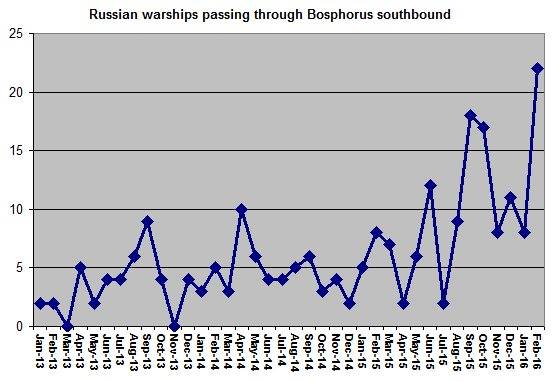
So… What have the Russians achieved and what have the Syrians gained from it ?
Some statistics first.
Over the first 168 days of their intervention, the Russian planes flew 9000 sorties. That’s an average of 53-54 sorties a day. The Russians first deployed around 32 planes and could sometimes peak at 65 sorties a day. After the downing of their Su-24 by the Turkish Airforce, the increased the size of their wing to about 44 planes (70 including the Mi-8, Mi-24P and Mi-28N helicopters) and sometimes peaked at around 75 sorties a day.
Keep in mind not all those sorties were done by bombers or by planes stationed in Lattakia, though, Russia also has fighter jets based in Hmeymim . Those escorted Russian bombers on their way to their targets as well as shadowing the US led coalition planes to their own targets. A-50, IL-20 and Tu-214R also flew several missions over Syria, gathering information and keeping overwatch. Finally, let’s not forget the several Tu-22, Tu-160, and Tu-95 from the Russian strategic aviation flying from Russia.
We still get an average of 1 to 2 sorties a day per plane. It is pretty good going. Only the USAF could rival with such numbers and despite that, the US led coalition based in Jordan which counts over 100 planes flies less than half that amount of missions daily.
The high Russian rate of missions is down to having a lot of ground crew at the Hmeymim airbase enabling quick turn over of the planes and the fact Russian airplanes are designed with low maintenance needs factored in.
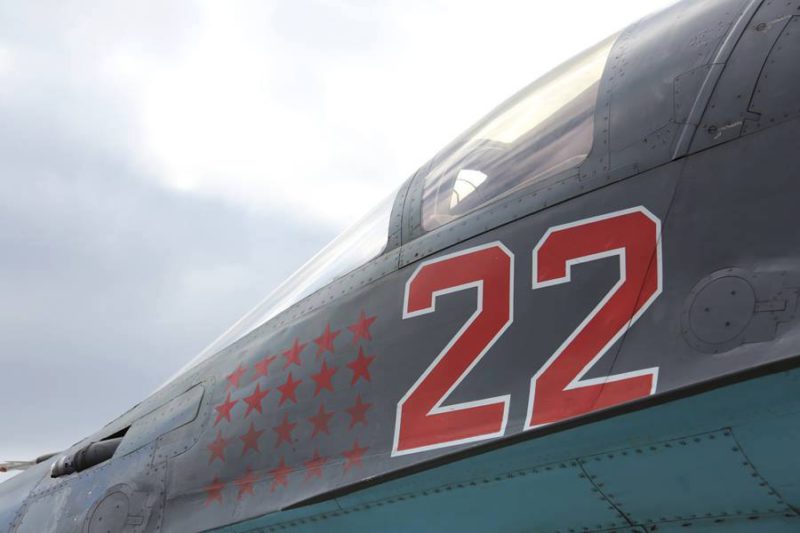
The Russian expeditionary force has helped the SAA, the Hezbollah and the many other militias supporting the SAA to liberate 400 towns and settlements and 10,000 square kilometres of Syrian territory in 5 months.
The Russian Airforce also engaged and destroyed 209 oil production facilities at the hand of ISIS as well as numerous ISIS oil convoys, financially and militarily weakening the terrorist organisation.
Russian and Syrian Strategy: The Carrot and Stick approach.
Under Russian supervision, the Syrian authorities have pursued a policy of offering amnesty to any Syrian rebel willing to surrender or fight alongside the SAA. The aim of the policy is to appeal to the patriotism of the Syrian born rebels: Join us and defend your country against the 50,000 odd foreign insurgents fighting for ISIS or Al-Nusra.
But that is only one of the two choices offered to the rebels. The other is to be constantly and ruthlessly bombed by the RuAF and shelled by the SAA. The message of this amnesty is therefore simple: Join us or die fighting us.
Another policy of the Syrian government is to offer foreign insurgents safe passage from one side of the country to another. It worked in Homs and Damascus. Insurgents were given safe passage toward Idlib or Raqqa.
By doing so, the Syrian leadership simplified the battlefield, enemy pockets were eliminated and towns or city blocks surrendered without fighting, thus reducing the number of fronts the SAA had to hold. Homs is totally free of Islamic insurgents and 100% under Syrian control and Damascus is almost cleared of insurgents as well. Another advantage of this policy is to concentrate rebels in some areas such as in the Idlib province where they become easy targets for the RuAF.
Russian Hardware, Training and Tactics For Syrian troops.
Russia delivered a lot of new hardware to the SAA, from BTR-82A, Tigr, T-90A, TOS to artillery rounds for guns and MLRS systems. They also provided rifles, RPG systems, Faggot and Kornet ATGM systems, uniforms and body armor.
Russian engineers were also seen in a Damascus airport repairing, modernising, and overhauling SyAF jets and helicopters.
Syrian troops were seen being pulled away from the frontline and sent to the Lattakia province where they were trained by Russian instructors.
The biggest change visible, however, is how the SAA now fights and it is pretty clear they follow Russian doctrine and tactics. Whereas the SAA used to deplete its numbers in useless predictable frontal assaults, it now keeps on the move and manoeuvres constantly on the battlefield. It is not as fluid or rapidly executed as a western army would, but it is a vast improvement on previous tactics or on what Middle Eastern armies had us used to witness.
Any objective of the SAA is relentlessly shelled and attacked from the air. SAA troops then attempt to take up position on at least 2 if not 3 flanks around said objective. They then keep on assaulting the target area alternating the origin and direction of each thrust, therefore keeping their enemy off balance.
As seen in Kuweires, the SAA now does not hesitate to maneuver over a large area in attempt to envelop or surround its enemies.
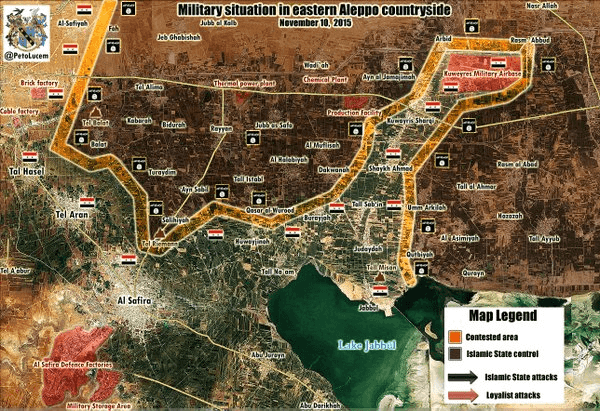
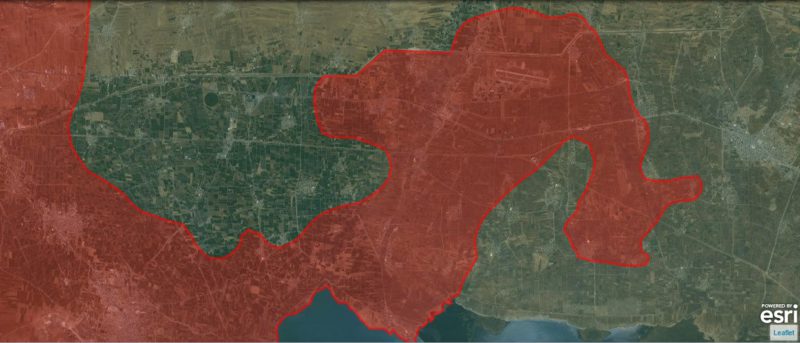
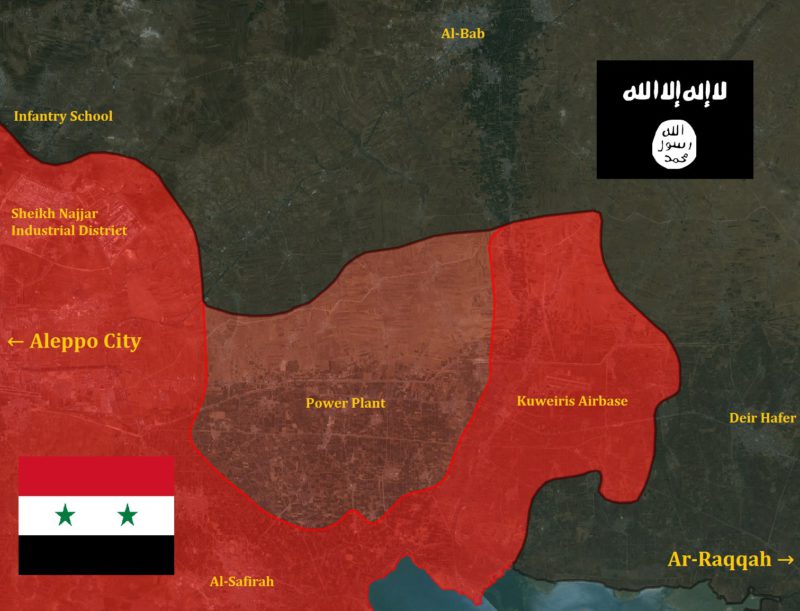
The SAA, although seriously short of manpower has also kept on attacking Al-Nusra, ISIS and the FSA on different fronts throughout Syria. The tactic worked as it kept their opponent guessing on where the next blow would come through, preventing them from sending troops from one side of the country to reinforce another side by fear of weakening any parts of their own front.
There, the Russian air force also lent a helping hand. Any convoy or concentration or rebels or insurgents has been engaged by the RuAF. Therefore preventing them from moving troops and supplies to the front where they were the most needed.
The Situation Now
While progress was slow at first, the momentum has now shifted in favour of loyalist forces.
The Lattakia province is liberated at 90%. The Turkish border which was in rebel hands and through which Turkmen militias and supplies used to transit is now secured by the SAA.
Aleppo is surrounded and its main supply route toward Turkey cut off. While the ISIS militias in Eastern Aleppo still have their line of supply toward Turkey and Raqqa open, the Al-Nusra troops holding Aleppo are almost completely cut off from the outside world. The siege has begun and the SAA and its allies on one side and Al-Nusra troops on the other are now locked in a bloody war of attrition fighting to defend or conquer one city block at a time.
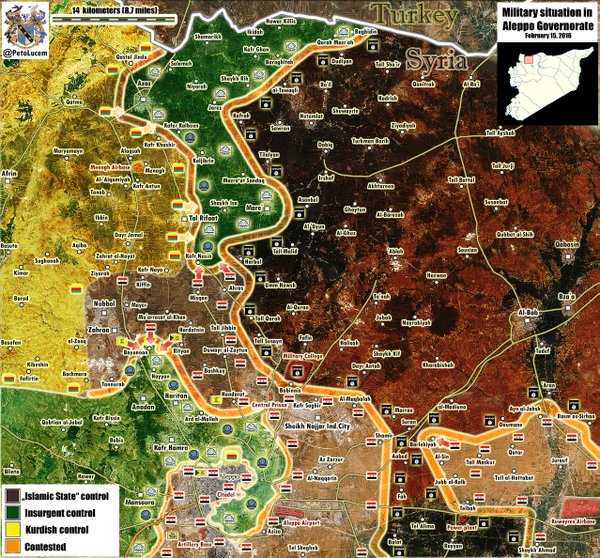
Idlib is now under pressure and is the last rebel/insurgents stronghold in Western Syria alongside Aleppo
Rebels along the Jordanian and Israeli border are under pressure and unable to mount a good defence at their current positions as the front was split in several places, preventing them to support each other’s positions. Also, the Jordanian border is now within striking distance of the SAA, preventing rebels from receiving supplies and reinforcements.
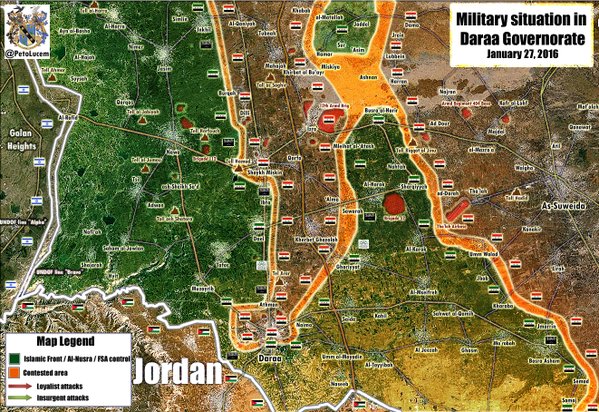
Why Are the Russians Downsizing Their Expeditionary Forces Now ?
There has been a lot of speculation and wild guesses as to why Russia is partially withdrawing now.
It certainly has nothing to do with Russia’s financial situation as some have suggested. The mission in Syria has cost the equivalent of $1 billion. Easily absorbed by the budget of the Ministry of defence of the Russian Federation.
So why and why now ?
Well, for a start, When the Russians started their operation in September 2015, Putin said that said operation had two main aims: 1) Stabilise the legitimate Syrian authorities (Assad) and 2 create the conditions necessary for a negotiated settlement. Less than 6 months later, we are there. Assad and his army have gone from being on the verge of defeat to being on the offensive and successful on the battlefield.
Furthermore, while 6 months ago most Western and Middle Eastern leaders demanded Assad be gone as a precondition to negotiate, we can now see negotiations taking place with Assad still firmly in control of Syria. Finally, while 6 months ago there was war and not much else, right now, all parties are negotiating.
Peace is not there yet and is not even a certainty, but people are negotiating, communicating. Progress has been made. The two main objectives of Russia at the beginning of their intervention have been reached. As simple as that.
Considering the high rate of missions flown by the planes of the RuAF based in Syria, they must be in need of heavy maintenance by now and the older Su24 and Su25 may actually be in need of a serious overhaul.
As the cease fire holds and Al Nusra and ISIS are still on the defensive, now might be a time for Russia to rotate its planes, bring the tired ones home and bring in fresh ones if needed (If the peace negotiations fail, for example).
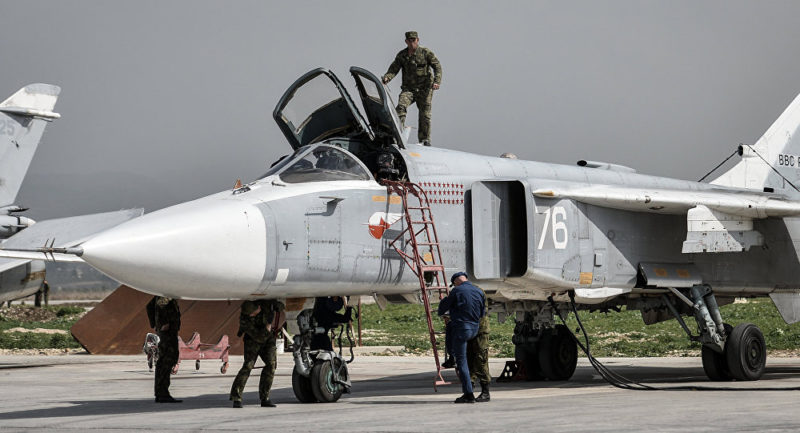
Finally, Russia has fought for a cease fire and free elections. Putin and Lavrov also proposed a federalisation of Syria which has the benefit of maintaining Syria as a united country and at the same time give the Kurds a semi-autonomous region within Syria itself.
Removing some of its weapon systems from Syria at the beginning of the negotiations might be a way for Moscow to put pressure on Assad to go with it, as he might not be overly enthusiastic to compete for presidential elections and risk losing power and/or losing total control over the Kurdish region of Syria.
Are We There Yet ?
Not really. The war is not won yet for Assad. Despite its new hardware and tactics, the SAA desperately needs foreign support. That means Hezbollah, Iraqi and Iranian boots on the ground and Russian jets in the air. Let’s not forget that by the most optimistic estimates, the SAA has lost 60.000 to 100.000 men out of a total strength of about 220.000 men since the beginning of the war.
The lack of manpower has already hurt the SAA in recent weeks. ISIS and Al-Nusra have managed to attack and breach their lines several times, as for example when ISIS cut off the main supply route to Aleppo in a surprise surge in early March. Each times, forcing the Syrian army to postpone an attack and move elite forces away from the frontline and into the new breach to close it and clear it.
While the Russians will keep providing the Syrian army with planes based in Hmeymim, any downsizing of the RuAF expeditionary force will weaken the SAA on the ground.
Furthermore, There is no safe passage possible for Al-Nusra affiliated insurgents anymore. They are now mainly concentrated and trapped in the Idlib region and in Aleppo. While some elements might be tempted to surrender, the most hardcore amongst them will certainly offer stiff fanatical resistance and the conquest of Aleppo promises to be bloody.
The same goes to ISIS. The beast is wounded but not dead yet. While its position near Palmyra is weakened and it is retreating, it is currently offering the SAA one of its bloodiest battles in this war there, yet. And while the US sponsored SDF forces (Mainly Kurdish militias) are advancing South along the Euphrates toward Raqqa, their progress is slow, mainly because the Kurds fear a Turkish attack behind their back.
Finally, Both ISIS and Al Nusra, unable to concentrate forces safely and fight conventionally have reverted back to counterinsurgency tactics and terror attacks targeting civilian centres.
Political Quagmire: The Stakes Are High
That’s the main problem with Syria: Everybody has a finger in that pie and everybody has invested far too much pride, money, diplomatic and political clout or reputation and for some, troops to willingly back off now.
Will Assad accept fair elections and step down if beaten democratically in the ballot boxes ? Will he accept to make concessions to the rebels and insurgents now that his army has finally turned the tide and gained ascendency after 5 years of terrible attrition ? Or will he be tempted to push his luck and try to gain or re-conquer more land and cities ?
Will Erdogan stop his support for Al-Nusra and Turkmen militias and his trading with ISIS, giving up his ambitions to spread his influence throughout the old Ottoman Empire and accepting to see an autonomous Kurdistan within a federal Syria being established along its own border ?
Will the House of Saud give up its support for Al-Quaeda after having invested so much money to support it and accept a Shia victory over a Sunni insurgency ? Is it ready to give up its battle for influence over the Middle East against Iran ?
Will the Western Coalition accept a defeat of the many rebel groups they invested in and supported throughout this war ? Would they accept a potential Syrian democratic vote for Bashar Al Assad to remain president of Syria thus making a U-turn after having said during 5 years that Assad must go ?
Will Russia turn its back on its ally after having invested so much money and efforts to prop it up ?
Will the foreign mercenaries fighting for Al Nusra and ISIS – probably outlawed or under surveillance in their own country by now- accept to cease fighting, accept to renounce building their Caliphate or Islamic state and simply drop their weapons and go home ?
Is Iran ready to give up on Syria, handing over a victory to its nemesis Saudi Arabia ? Even after having spent so much money and sent so many men to fight alongside the SAA ? Will it take the risk of having a Sunni Caliphate along its own borders ?
The biggest problem is that Syria has become a battle of ego for the local and global powers that got involved there.
Too many bombastic declarations were made to the press at home and abroad. Any negotiation, any concession will be seen as losing face by the people doing so and by their people back home. Our leaders were meant to be cool headed and professional. They instead boasted and threatened and patronised in front of the cameras for the past 5 years. How can they now back down without losing face and political credit ?
There are many peace plans floating around. Some worse than others, including a couple of plans advocating the break-up of Syria into several independent entities. That type of solution in a multi-ethnic, multi-faith country would surely lead to a balkanisation of the country and turn this war into a full blown regional war of religion.
So sadly enough, one is not so sure the drums of war are going to fall silent any time soon in Syria.


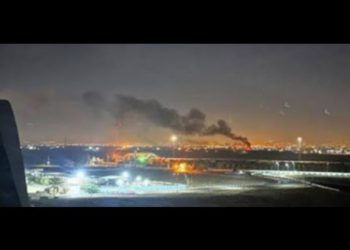
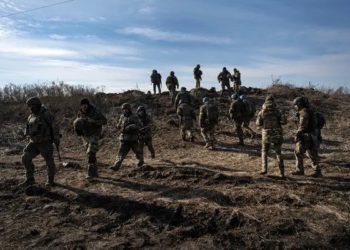
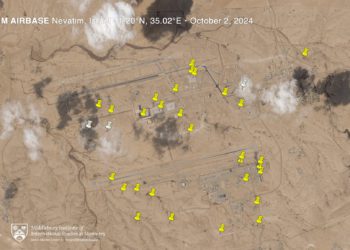
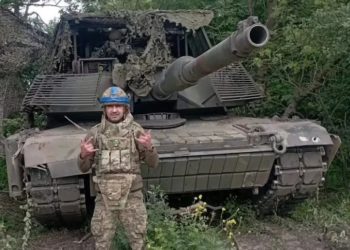
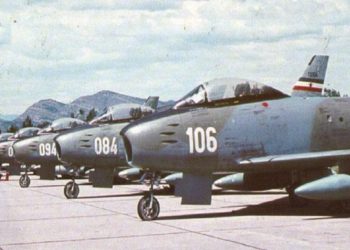
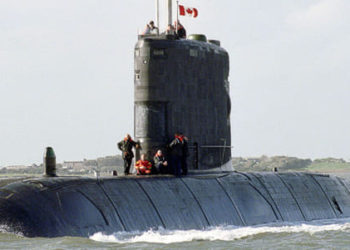
I’m not sure where you’re getting your information, but good topic.
I needs to spend some time learning more or understanding
more. Thanks for magnificent information I was looking
for this info for my mission.